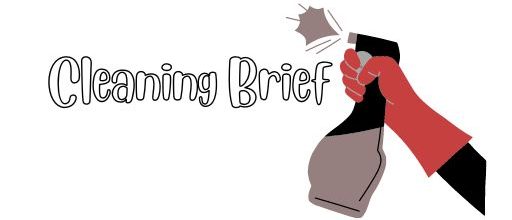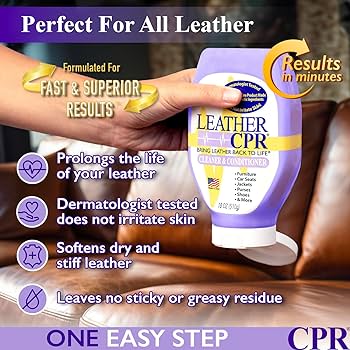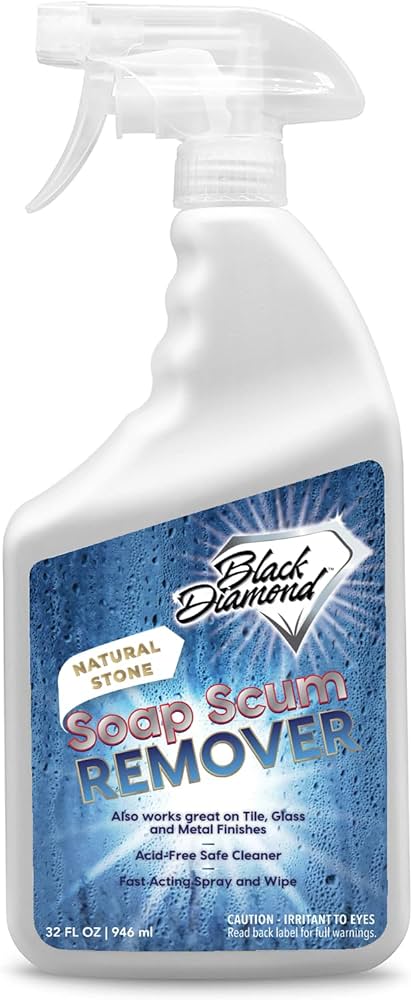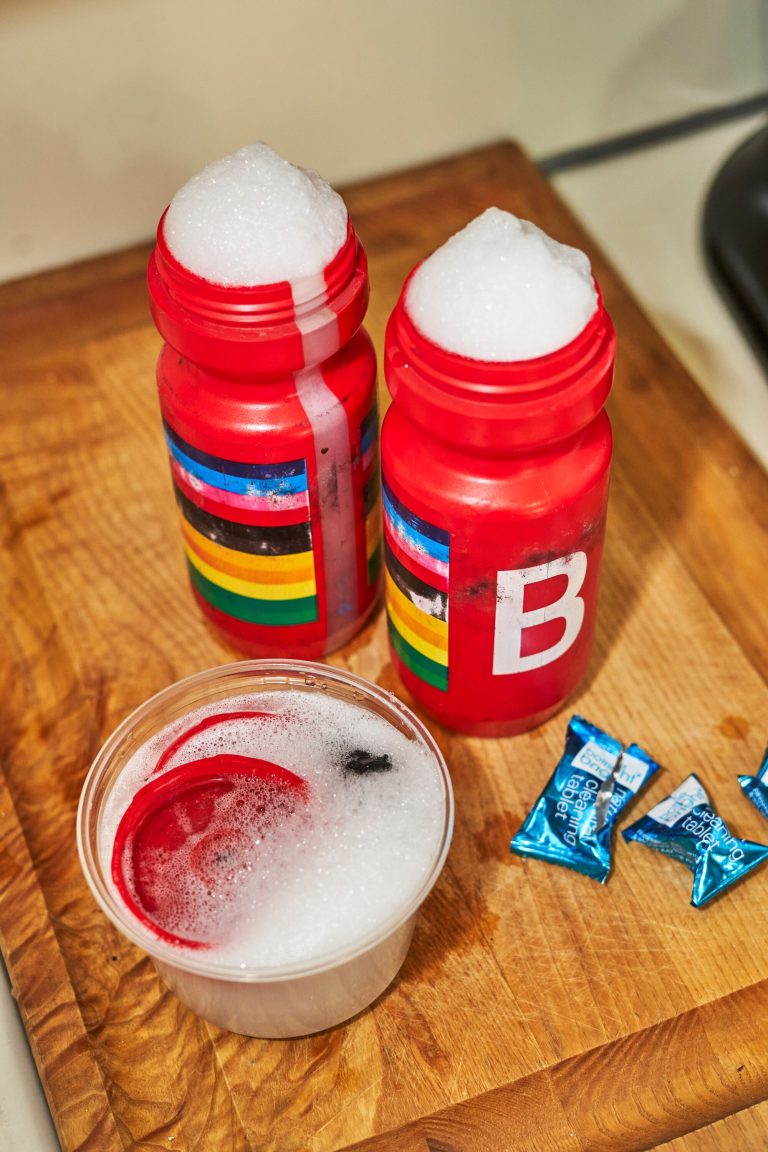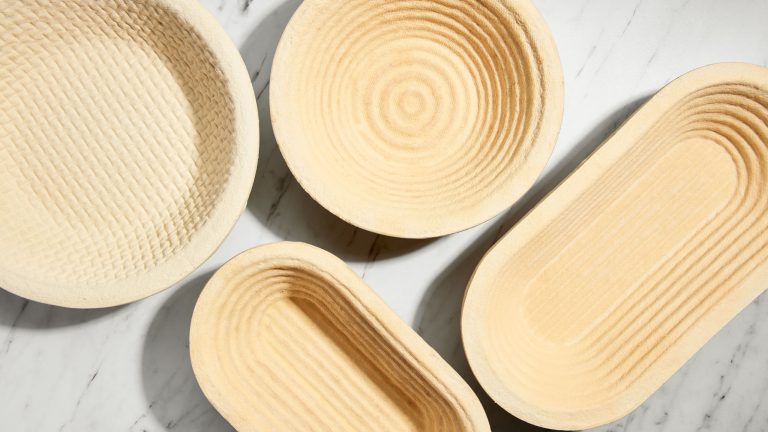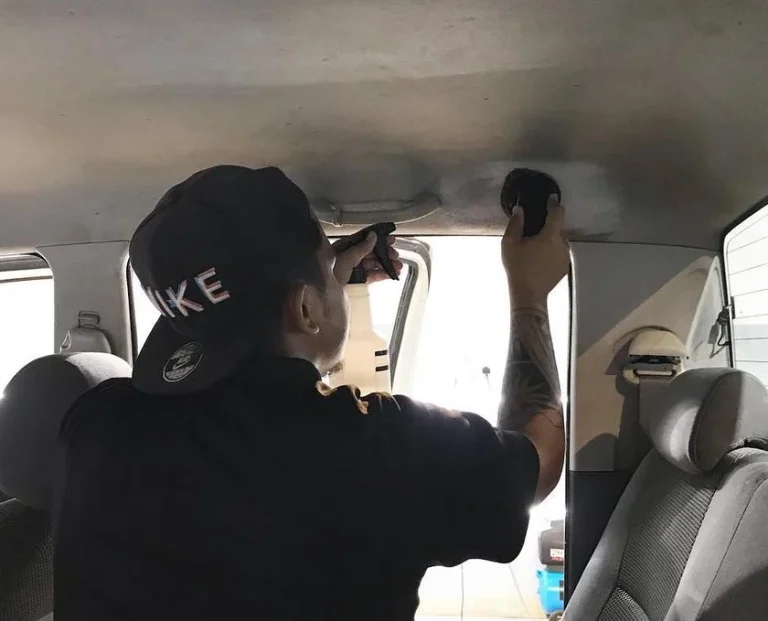How to Clean Mold off Leather Couch: Essential Steps for Spotless Results
To clean mold off a leather couch, first, mix equal parts of water and rubbing alcohol, then gently dab the affected area with a soft cloth. Next, wipe the area with a clean damp cloth and let it air dry.
A leather couch adds a touch of luxury and sophistication to any space. However, if not properly cared for, mold can grow on its surface, compromising both its appearance and your health. Mold thrives in damp and dark conditions, so it’s essential to address any signs of mold growth immediately.
This article will guide you through the steps to effectively clean mold off your leather couch, restoring it to its pristine condition and ensuring a healthier living environment for you and your family. Note: Prior to starting the cleaning process, test the cleaning solution on a small, hidden area of your leather couch to ensure it doesn’t cause any damage.
Understanding Mold On Leather Couches
Mold on leather couches can be a pesky issue but can be effectively cleaned with the right approach. To clean mold off a leather couch, begin by dusting and vacuuming the affected area, then proceed to use a mixture of mild soap and water to gently clean the mold.
Remember to dry the leather thoroughly to prevent future mold growth.
When it comes to keeping your leather couch clean and free from any kind of damage, one particular problem that you might encounter is mold. Mold is a common issue that can occur if your leather couch is exposed to excessive moisture and warmth. Understanding mold on leather couches is crucial in order to address and remove it effectively. In this article, we will discuss what causes mold on leather couches and how to identify it.
What Causes Mold On Leather Couches?
Mold on leather couches is often caused by environmental factors and improper maintenance. Here are the main culprits:
- Lack of ventilation: If your leather couch is placed in an area with poor ventilation, it can create a damp environment that facilitates mold growth.
- Humidity: High humidity levels can promote mold growth on leather surfaces, especially if the couch is located in a humid climate or near sources of moisture.
- Water spills or leaks: Accidental spills or unnoticed leaks can saturate the leather and provide the ideal conditions for mold to thrive.
Identifying Mold On Leather Couches
Identifying mold on leather couches is crucial to prevent the spread of mold and to take appropriate cleaning measures. Here are some signs that indicate the presence of mold:
- Visible growth: Mold can appear as black, green, or white patches on the surface of the leather couch.
- Musty smell: Mold often produces a distinctive musty odor. If your couch emits this smell, it may be an indication of mold growth.
- Allergy symptoms: If you or anyone in your household experiences allergic reactions such as coughing, sneezing, or itchy eyes when near the couch, it could be a sign of mold contamination.
Identifying mold on your leather couch promptly is important to prevent further damage and keep your living space healthy. Once you have identified the presence of mold, it’s essential to take immediate action to clean and remove it. In the next section, we will discuss effective ways to clean mold off leather couches.
.webp)
Credit: www.mollymaid.com
Essential Supplies For Cleaning Mold Off Leather Couches
Cleaning mold off leather couches requires essential supplies like a soft cloth, mild soap, distilled water, rubbing alcohol, and leather conditioner. Gently removing the mold and properly treating the leather will restore its original condition.
Gathering The Necessary Cleaning Materials
To effectively clean mold off a leather couch, you’ll need a few essential supplies. By gathering these cleaning materials beforehand, you’ll be prepared to tackle the task efficiently. Here are the supplies you’ll need:- A soft-bristle brush or vacuum cleaner with a brush attachment. This will help you remove any loose mold spores or debris from the couch.
- A clean, white cloth or sponge. Make sure it’s non-abrasive to avoid damaging the leather.
- A mild soap or leather cleaner. Look for one that is specifically designed for cleaning leather. Be cautious in choosing a product that is gentle yet effective.
- A small bowl or bucket to mix the cleaning solution.
- A spray bottle filled with water. This will be used to dampen the cloth or sponge during the cleaning process.
- A dry microfiber cloth for drying the leather after cleaning.
Protective Gear For The Cleaning Process
As you clean mold off your leather couch, it’s essential to protect yourself from potential health hazards. Mold spores can cause respiratory issues when inhaled, so wearing the right protective gear is crucial. Consider using the following protective equipment:- Nitrile or rubber gloves: These will protect your hands from coming into direct contact with the mold and cleaning products.
- Protective eyewear: Mold spores can irritate your eyes. Wearing goggles or safety glasses will prevent any potential harm.
- A disposable face mask or respirator: This will help filter out mold spores and prevent inhalation during the cleaning process.
Step-by-step Cleaning Process
Cleaning mold off a leather couch can seem like a daunting task, but with the right process, you can revitalize your sofa and keep it looking as good as new. Follow these step-by-step instructions to safely and effectively remove mold from your beloved leather couch.
Preparation Steps
Before you begin the cleaning process, ensure you have the necessary supplies ready. Here’s what you’ll need:
- A soft-bristled brush
- Vacuum cleaner with upholstery attachment
- Distilled white vinegar
- Olive oil or leather conditioner
- Clean, lint-free cloths
- Protective gloves
Cleaning Mold From Leather Couches
Follow these steps to effectively clean mold from your leather couch:
- Begin by vacuuming the affected areas to remove any loose mold spores and debris.
- Use a soft-bristled brush to gently brush off any surface mold from the leather.
- Dampen a clean cloth with distilled white vinegar and gently dab the affected areas to kill the mold and remove any remaining stains.
- Allow the vinegar to air dry for a few hours, ensuring proper ventilation in the room.
- Once dry, treat the leather with a small amount of olive oil or a recommended leather conditioner to restore its natural shine and suppleness.
- Regularly condition your leather couch to prevent future mold growth and maintain its luster.
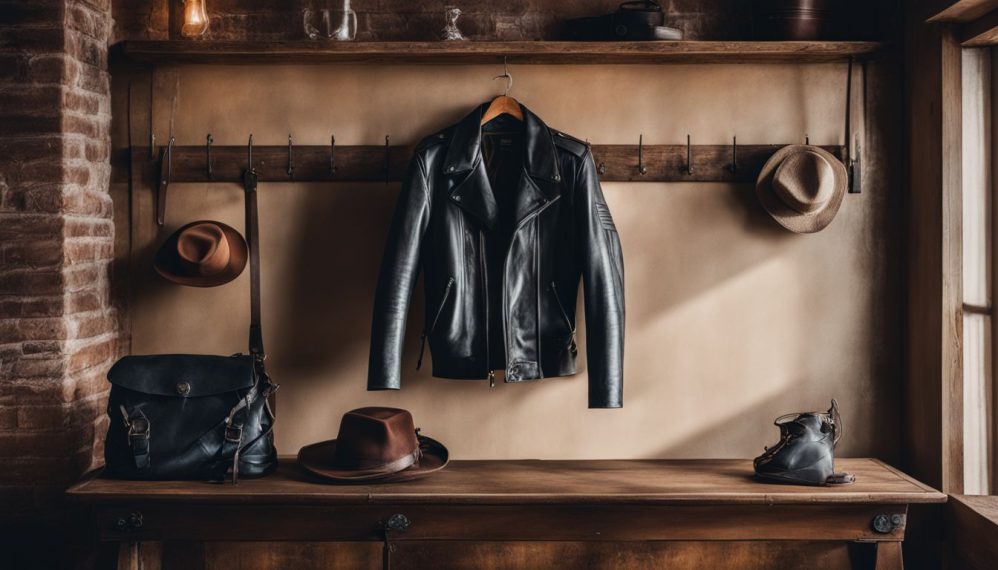
Credit: fcdrycleaners.com
Preventing Mold From Returning
Keep your leather couch mold-free by following these simple steps: wipe off any visible mold with a damp cloth, use a mixture of mild soap and water to clean the surface, dry the couch thoroughly, and apply a leather conditioner to prevent future mold growth.
Keeping your leather couch mold-free requires taking proactive steps to prevent its return. Here’s how you can effectively apply preventive measures and maintain a mold-free leather couch:Applying Preventive Measures
To ensure your leather couch stays mold-free, it is crucial to implement simple preventive measures with regularity. Follow these steps to prevent mold from reappearing:- Keep the leather couch dry and well-ventilated by opening windows or using a dehumidifier to reduce moisture levels.
- Place the leather couch in a location away from high-humidity areas such as bathrooms or basements.
- Ensure proper air circulation around the couch by leaving enough space between the furniture and the walls.
- Avoid spilling liquids or placing wet items on the leather couch. If any accidents happen, clean the affected area immediately and thoroughly to prevent moisture absorption.
- Regularly clean and dust the leather couch, as mold spores can settle on the surface. Use a soft cloth or vacuum cleaner to remove any dirt or dust particles that may aid mold growth.
- Avoid placing the leather couch directly under direct sunlight or direct heat sources, as excessive heat and sun exposure can damage the leather and create conditions conducive to mold growth.
Maintaining A Mold-free Leather Couch
Once you have implemented preventive measures, regular maintenance is essential to ensure your leather couch remains free from mold. Follow these tips for maintaining a mold-free leather couch:- Inspect the leather couch periodically for signs of mold growth, such as musty odors, visible spots, or discoloration. Promptly address any issues to prevent further mold development.
- Use a specialized leather cleaner and conditioner to keep the couch’s surface clean, moisturized, and resistant to mold. Follow the product instructions carefully and avoid using harsh chemicals that may damage the leather.
- Consider applying a mold-resistant leather protector or spray as an additional measure. Be sure to choose a product specifically designed for leather furniture and follow the application instructions accurately.
- If you have pets, regularly vacuum and groom them to minimize fur shedding and prevent the accumulation of organic matter that can contribute to mold growth.
- Make it a habit to remove cushions and pillows from the leather couch and fluff them regularly to prevent moisture accumulation. This will allow proper air circulation and minimize the risk of mold formation.
- In case of any spills or stains, clean them immediately with a damp cloth to prevent moisture absorption and potential mold growth.
Professional Leather Care Options
To clean mold off a leather couch, consider professional leather care options for effective cleaning and restoration. Taking proper care of your leather furniture will help prevent mold growth and maintain its quality for years to come. Use specialized leather cleaners and conditioners to remove mold and protect the leather from future damage.
Considering Professional Cleaning Services
If you’re dealing with mold on your leather couch and unsure how to proceed, it may be wise to consider professional cleaning services. Mold can be stubborn and removing it from leather requires special care. Professional cleaners have the expertise and tools necessary to effectively clean and restore your leather couch. They are experienced in handling different types of mold and can ensure thorough cleaning without damaging the material. By opting for professional services, you can save time and effort while ensuring your couch receives the proper treatment it needs.Regular Leather Maintenance Tips
Regular maintenance is key to preventing mold growth and extending the lifespan of your leather couch. By following these simple tips, you can keep your leather looking its best:- Keep your leather couch away from direct sunlight and heat sources, as they can cause drying and cracking.
- Wipe your couch regularly with a clean, dry cloth to remove dust and prevent dirt buildup.
- Avoid using harsh cleaners or chemicals on your leather as they can damage the material. Instead, use a mild soap or leather cleaner specifically formulated for leather care.
- Condition your leather couch every few months to keep it moisturized and prevent dryness. Apply a small amount of leather conditioner onto a clean cloth and gently rub it into the leather in circular motions. Wipe off any excess conditioner with a dry cloth.
- Immediately treat any spills or stains on your leather couch to prevent them from setting in. Blot the spill gently with a clean cloth and use a mild soap or specialized leather cleaner if needed.
Professional Leather Cleaning Vs. Diy
While DIY methods may seem cost-effective, it’s important to weigh the pros and cons before deciding to clean your leather couch yourself. Professional cleaners have the knowledge and experience to properly tackle mold and restore your leather to its original condition. DIY methods may not be as effective or could potentially damage your couch. Additionally, professional cleaners may use specialized products and techniques that are not readily available to the average consumer. Investing in professional cleaning services can ensure a thorough and safe cleaning process for your leather couch. In conclusion, professional leather care options provide an excellent solution for effectively cleaning and restoring your mold-affected leather couch. However, incorporating regular maintenance tips can help prolong the life of your couch and prevent future mold growth. Whether you choose professional services or opt for DIY, remember to prioritize the health and longevity of your leather couch.
Credit: www.amazon.com
Frequently Asked Questions Of How To Clean Mold Off Leather Couch
How Do I Clean Mold Off My Leather Couch?
To clean mold off your leather couch, first, vacuum the surface to remove loose mold spores. Then, wipe the affected area with a mixture of water and mild soap using a soft cloth. Gently scrub the mold until it’s removed, making sure not to saturate the leather.
Finally, wipe the area with a clean damp cloth and allow it to air dry.
Can I Use Bleach To Clean Mold On My Leather Couch?
It’s not recommended to use bleach on a leather couch to clean mold. Bleach can damage the leather and cause discoloration. Instead, use a mixture of water and mild soap to gently clean the affected area. If the mold persists, consider consulting a professional leather cleaner for further assistance.
How Can I Prevent Mold From Growing On My Leather Couch?
To prevent mold from growing on your leather couch, ensure that it is kept in a well-ventilated area with moderate humidity levels. Avoid placing the couch near sources of moisture or in damp environments. Regularly clean and condition the leather to maintain its quality and prevent mold growth.
If you notice any signs of mold, address the issue promptly with the appropriate cleaning methods.
Conclusion
Cleaning mold off a leather couch is manageable with the right tools and techniques. Regular maintenance and prompt action are crucial to prevent mold growth. Remember to test any cleaning solution on a small, inconspicuous area first. By following these steps, you can keep your leather couch looking clean and well-maintained for years to come.
